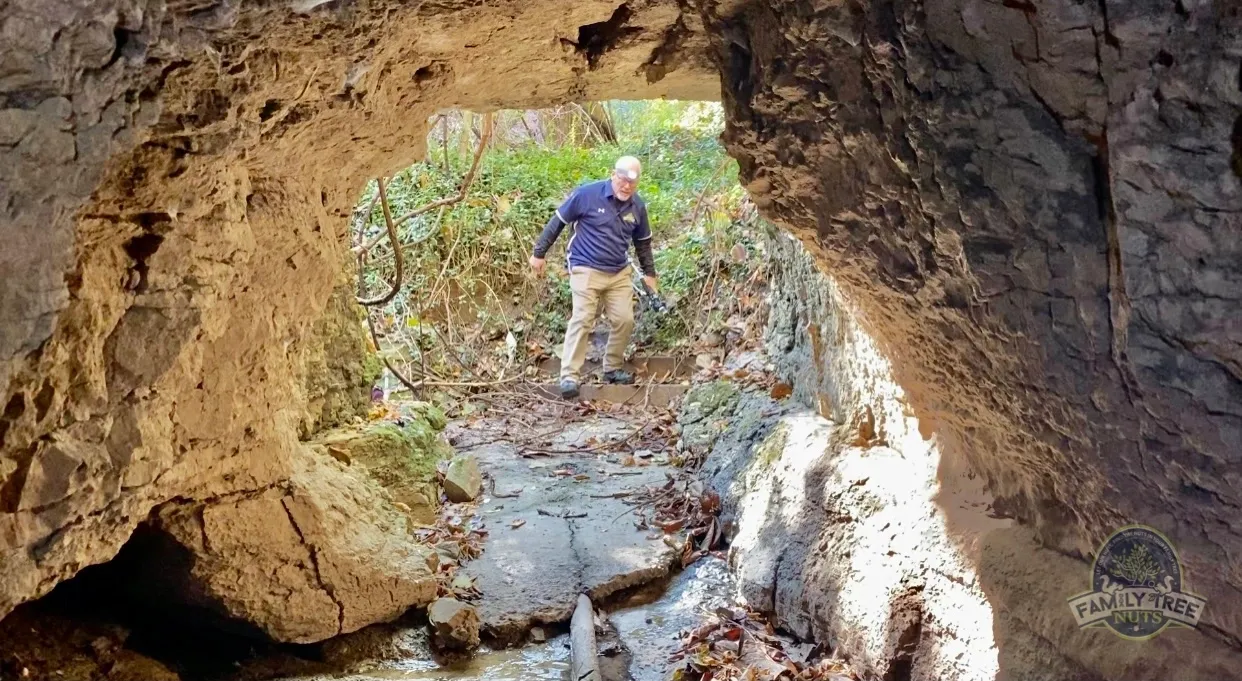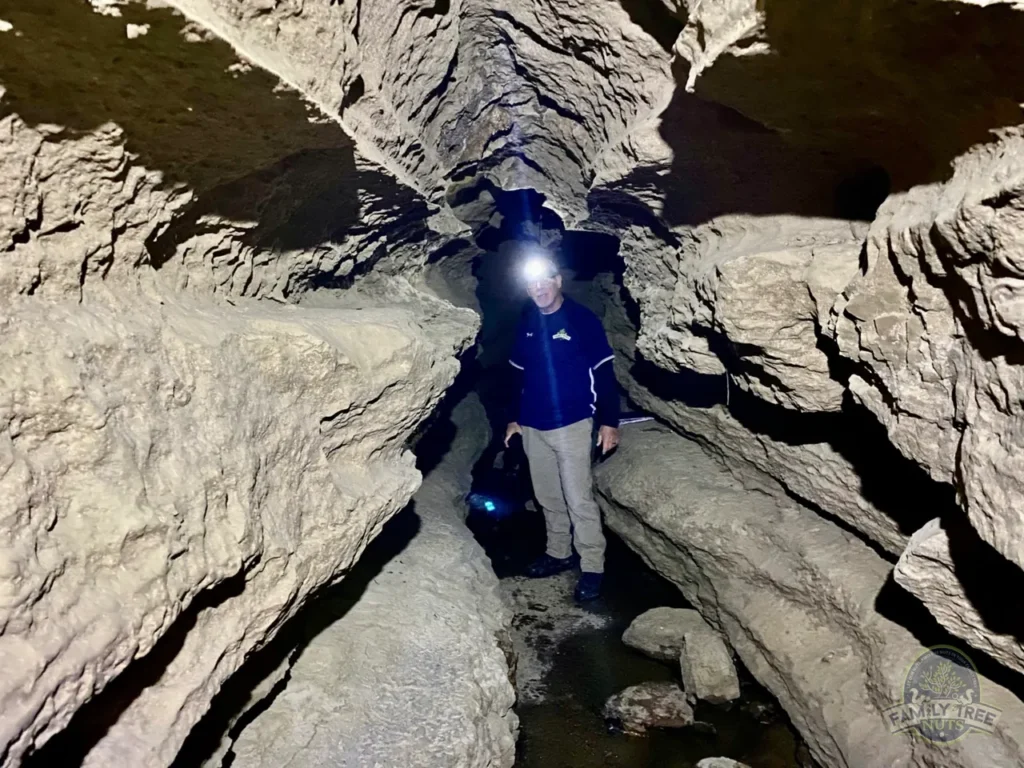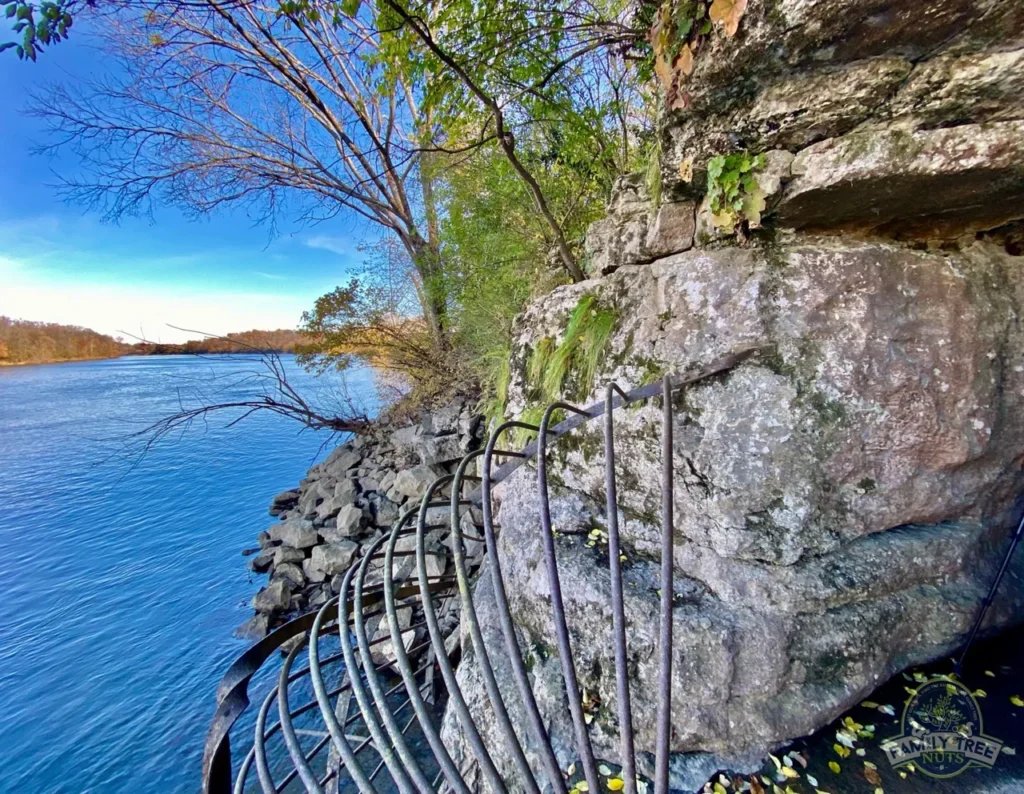
1769! THE FIRST HOUSE IN NASHVILLE, DEMONBREUN CAVE
He arrived here in 1769, and his home is still here. Well, at least his temporary home. How could that be? This isn’t Boston, and there’s no structures around here that old. Well, you’ll never guess where it is. Down on the Cumberland River, is what is most likely the first home in Nashville, Tennessee. This is the story of Timothy Demonbreun, who was the first resident of European descent to come to this region, which was known as the French Lick and a great place to hunt and trap game. He was the son of French-Canadian nobles, and he left the lavish lifestyle by colonial standards, to come here to be a simple fur trader, far from his home to what is now Nashville, Tennessee. For 20 years, during the summer and fall, he would hunt for pelts, take them down to New Orleans and sell them and then return up to his home in Illinois for the winter.

Demonbreun needed a safe place to live and to store his pelts. Fort Nashborough hadn’t even been thought of yet and the local Chickasaw’s could be somewhat, let’s say, unfriendly at times. He spent some of his time in a cave down on the Cumberland River and it’s still there. It actually has two entrances, one down along the river and another one on the other end approximately 125 feet away. Some historians say that the Demonbreun found safety and warmth here, used it for storage for his pelts, and actually hid from the hostile Native Americans, at least on one occasion.
Around the same time that Demonbreun was hunting in this area, James Robertson, Daniel Boone and hundreds of others were crossing the Appalachian Mountains and exploring along the Watauga, Doe, Nolichucky and Holston Rivers in the area if what is now known is Elizabethton, Tennessee. Daniel Boone had been exploring up in Kentucky, and was later hired to lead settlers through the Cumberland Gap. That road later became known as the Wilderness Road, allowing people to get across the Appalachian Mountains and to settle in the Bluegrass Region of Kentucky.

These same men helped found the Watauga Association, which formed the foundation for their government, but they were later annexed back into the state of North Carolina and became known as the Washington District. Then, in 1779 and 1780, the Cumberland Compact was signed by early settlers. James Robertson, John Donaldson, and a small group of men left the Watauga settlement and traveled further west to an area called the French Lick along the Cumberland River, which is where Nashville is now located. They found it to be suitable for a new settlement.

When they arrived in the area, who did they find trapping and sometimes living in this cave? Of course, the old furred trapper Timothy Demonbreun. Soon after, they started construction on what’s now called Fort Nashborough, and when it was completed, James Robertson, Timothy Demonbreun brought their families here to settle permanently. It wasn’t long before the local Chickamaugas, a local faction of the Cherokee, attacked the fort. Robertson’s two brothers John and Mark were killed, along with his sons, Peyton and James Jr. Another son Jonathan was shot but lived, and Robertson himself was shot while hoeing corn. The sacrifices to settle in the new land were extremely great.
Both the Demonbreun and Robertson families became successful business owners and politicians in their new hometown of Nashville. A popular street in downtown Nashville is named after Timothy Demonbreun and James Robertson is buried here in the city cemetery.
Almost a quarter of a millennium later, if you know how to get here, you can venture to this cave and let your mind take you back to the time when it was a wild frontier and imagine Timothy Demonbreun sleeping next to his fire, his furs tucked safely away in a cove. Then you can stand at the mouth of the cave on the river, look to your left and see downtown Nashville. Demonbreun Cave, one of the quietest places on earth where you can see the past and the present with just a turn of the head. It’s amazing to think about the history that has passed right at the very spot!

In the 1930s the cave became somewhat of a tourist trap, and folks paid to travel down to the river’s edge and relive some very early Tennessee history. Demonbreun Cave was listed on the U.S. National Register of Historic Places in 1980. Be sure to see the video at the link below to hear the story on location.
-Scott Denney, Historian for Family Tree Nuts
